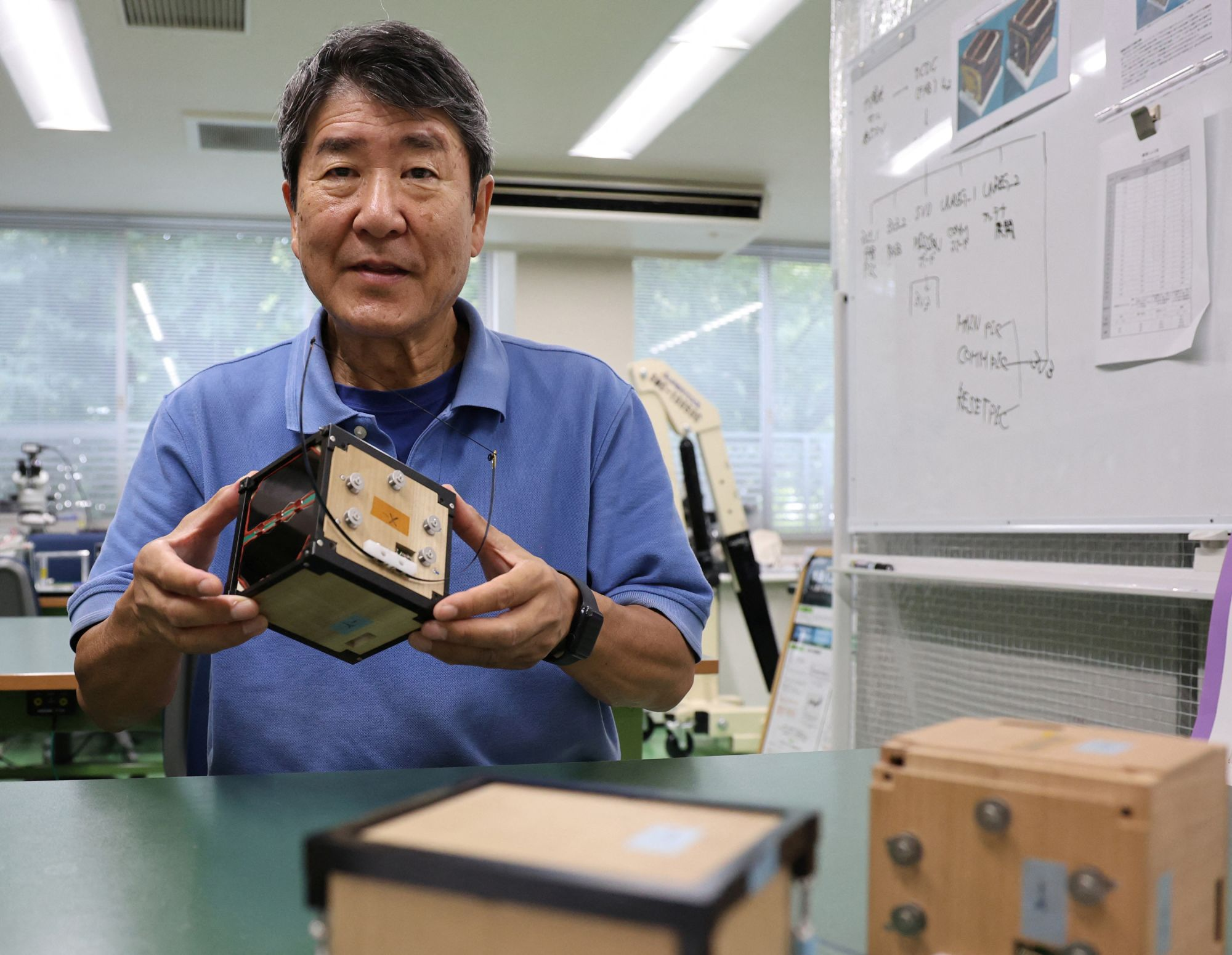World’s First Wooden Satellite, Developed in Japan, Heads to Space

The world’s first wooden satellite, crafted by researchers in Japan, was launched into space on Tuesday, marking a pioneering step in exploring the use of timber for lunar and Martian missions.
LignoSat, developed by Kyoto University in collaboration with homebuilder Sumitomo Forestry, is on a SpaceX mission to the International Space Station (ISS), from where it will be released into orbit approximately 400 kilometers (250 miles) above Earth. Named after the Latin term for “wood,” LignoSat is designed to assess the potential of renewable materials for long-term human habitation in space.
Takao Doi, an astronaut and human space activities researcher at Kyoto University, emphasized the significance of using timber: “With timber, a material we can produce by ourselves, we will be able to build houses, live, and work in space forever.” His team envisions a 50-year initiative focused on planting trees and constructing timber habitats on the Moon and Mars, prompting the development of this NASA-certified wooden satellite to validate the viability of wood as a space-grade material.
Koji Murata, a forest science professor at Kyoto University, noted, “Early 1900s airplanes were made of wood. A wooden satellite should be feasible, too.” He added that wood might actually perform better in space conditions, as it is less prone to rot or combustion without the presence of water or oxygen.
The environmental benefits of a wooden satellite are also significant, as it would produce less pollution upon decommissioning. Current metal satellites must re-enter the atmosphere to prevent space debris; during this process, they generate aluminum oxide particles. In contrast, wooden satellites would simply burn up, resulting in a cleaner re-entry, according to Doi, who suggested that “metal satellites might be banned in the future.”
Industrial Applications
The research team determined that honoki, a magnolia species native to Japan and traditionally used for sword sheaths, is the most suitable material for space applications after a 10-month study on the ISS. LignoSat is constructed using traditional Japanese craft techniques, without the use of screws or glue.
Once deployed, LignoSat will orbit the Earth for six months, with onboard electronics monitoring how wood withstands the extreme conditions of space, where temperatures can vary from -100 to 100 degrees Celsius (-148 to 212 degrees Fahrenheit) every 45 minutes as it transitions between light and darkness.
Additionally, LignoSat will evaluate wood’s effectiveness in shielding semiconductors from space radiation, which could have practical implications for constructing data centers, according to Kenji Kariya, a manager at Sumitomo Forestry’s Tsukuba Research Institute. He remarked, “It may seem outdated, but wood is actually cutting-edge technology as civilization heads to the Moon and Mars. Expansion into space could invigorate the timber industry.”





















